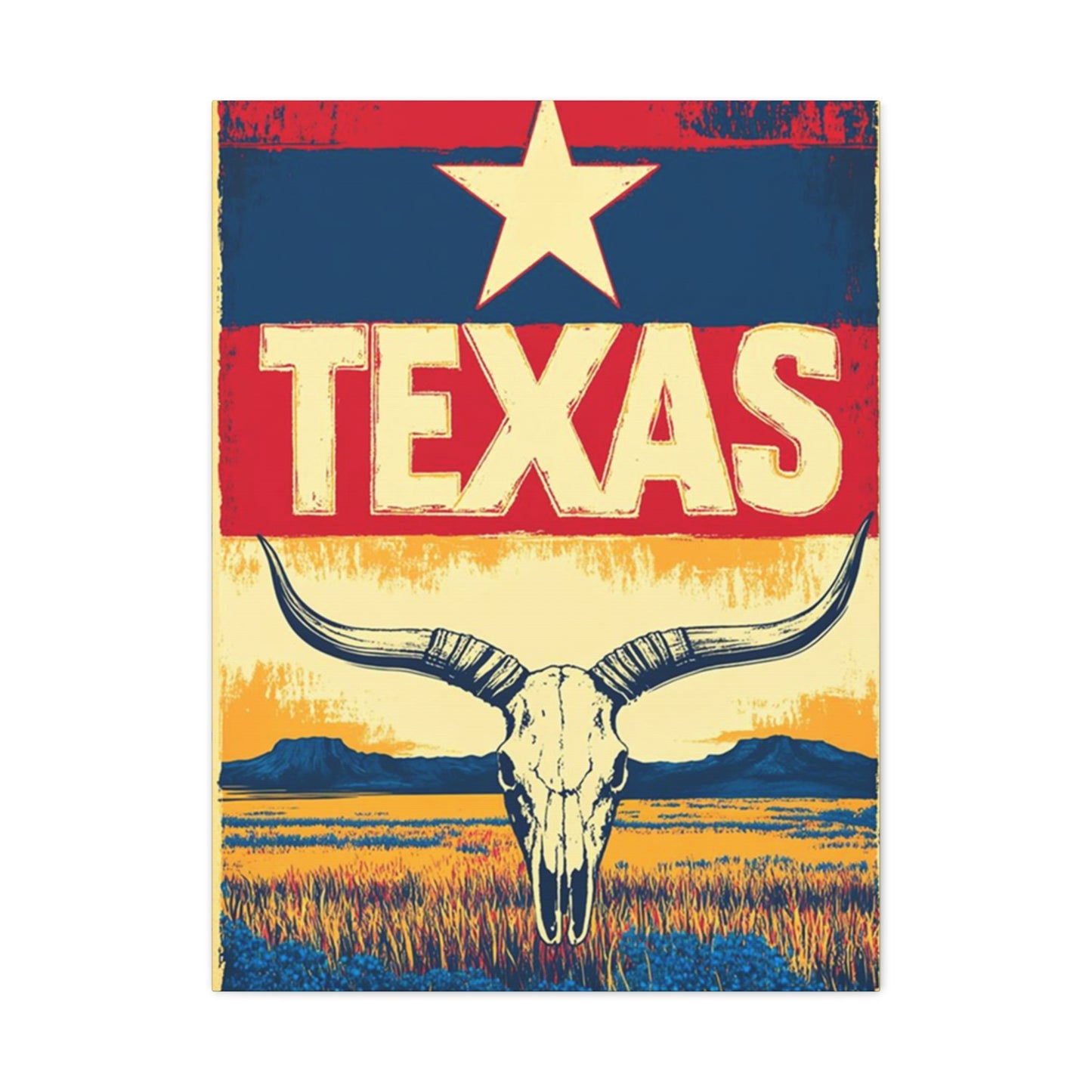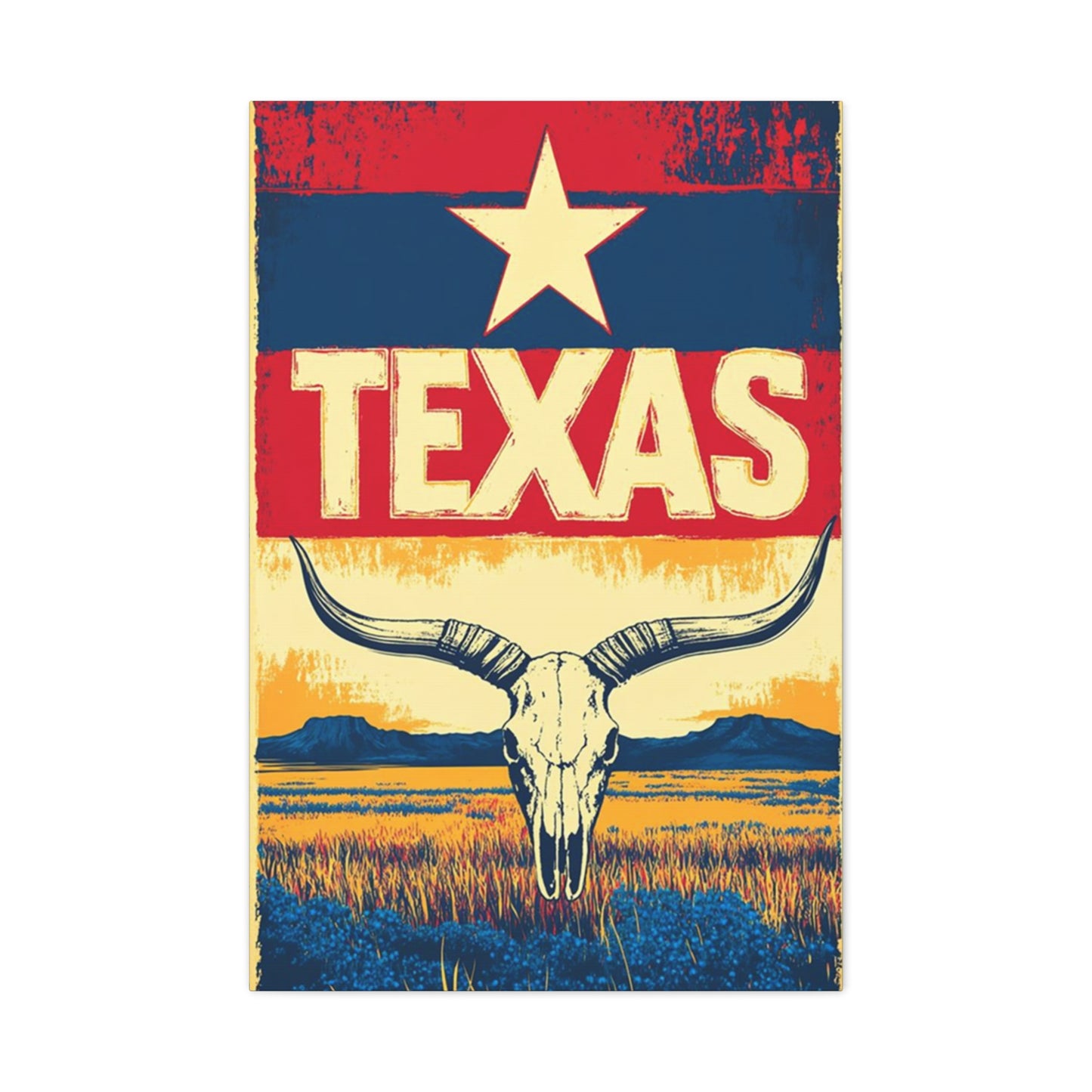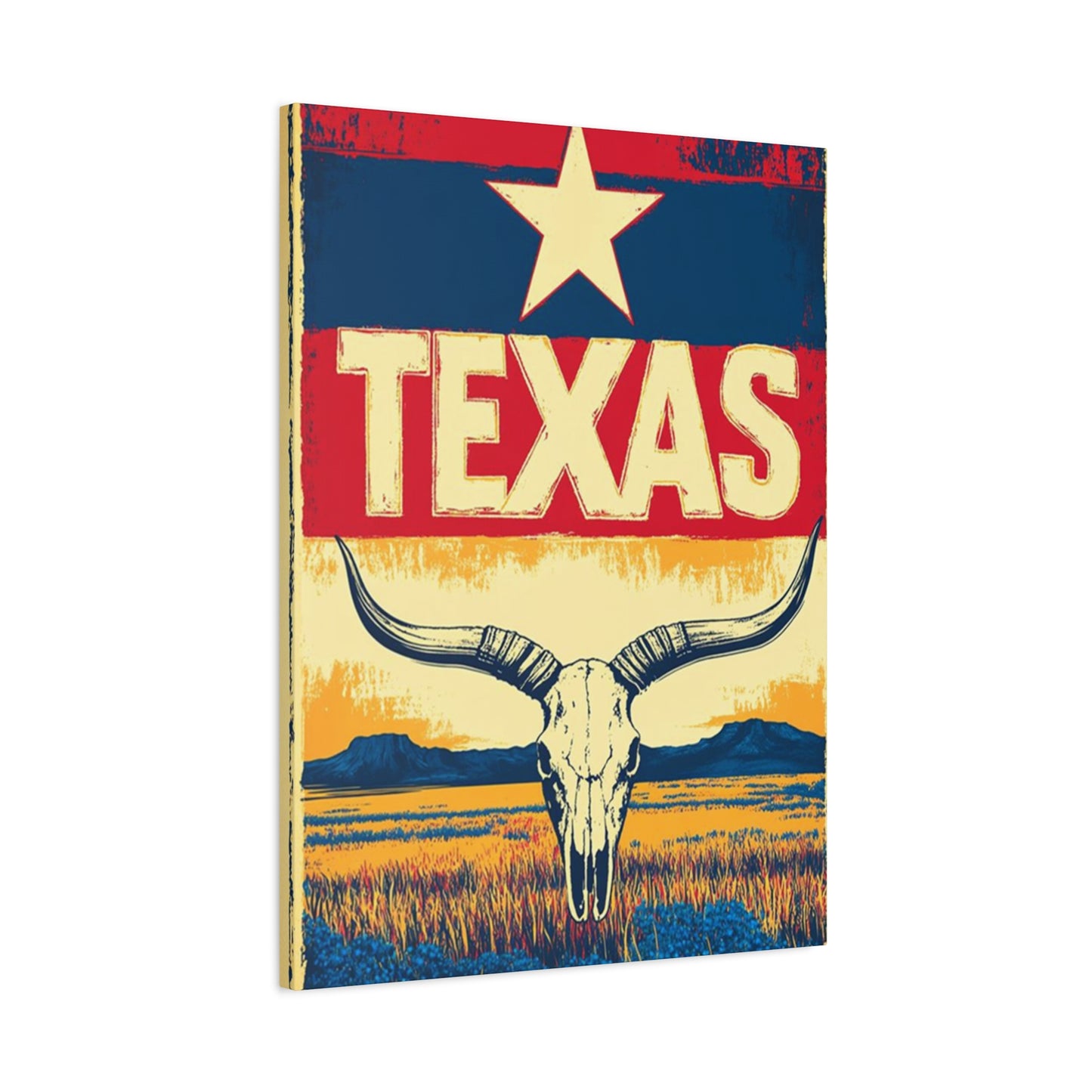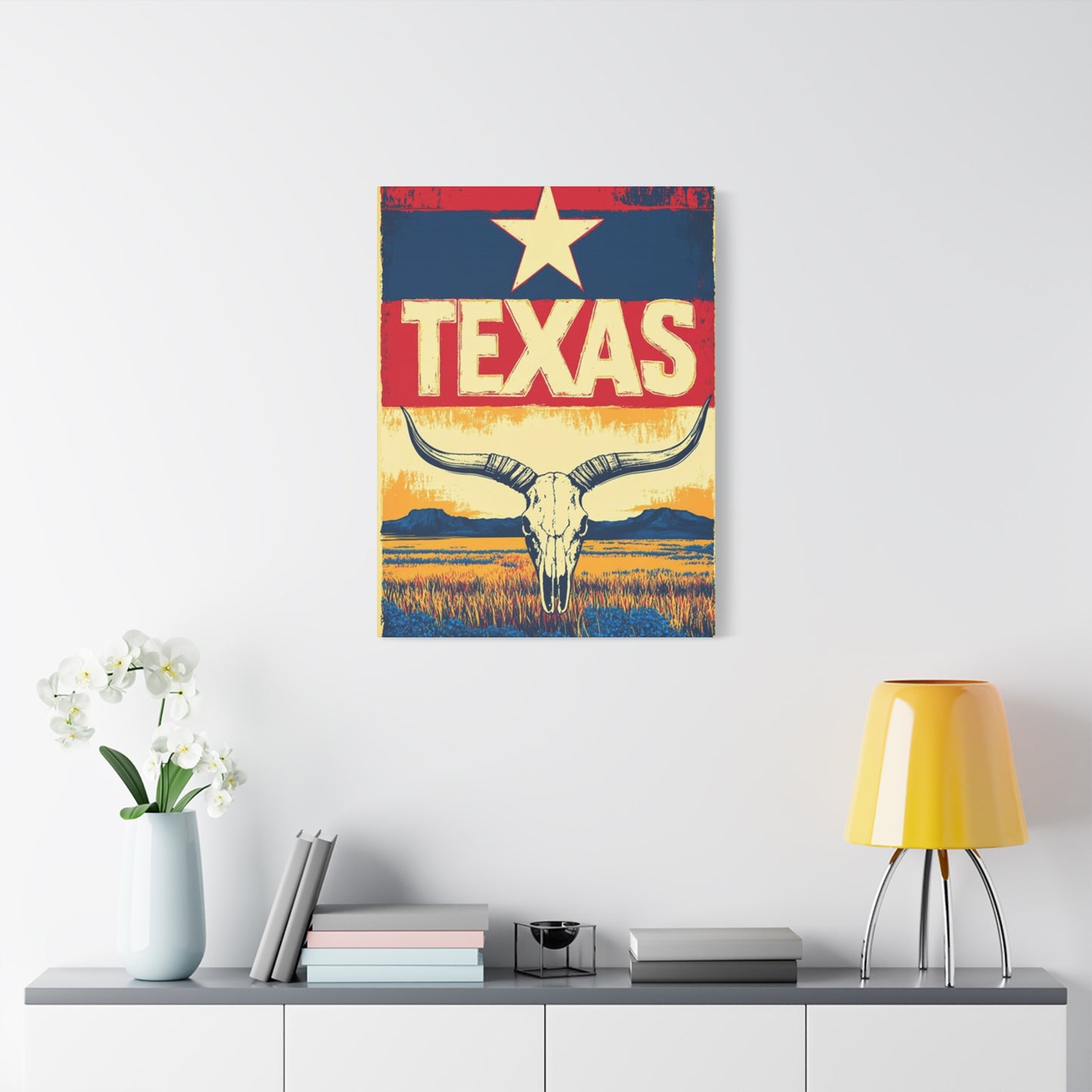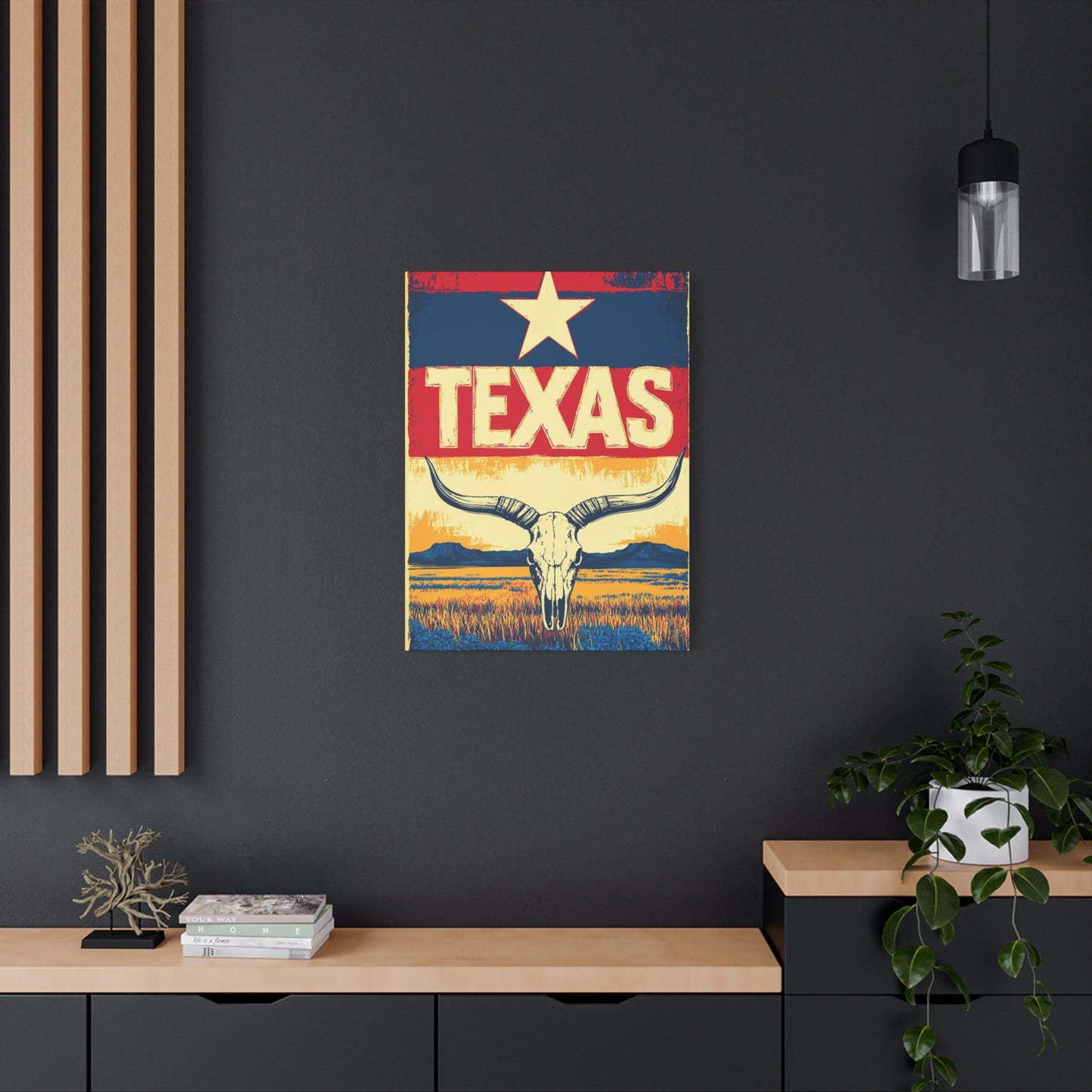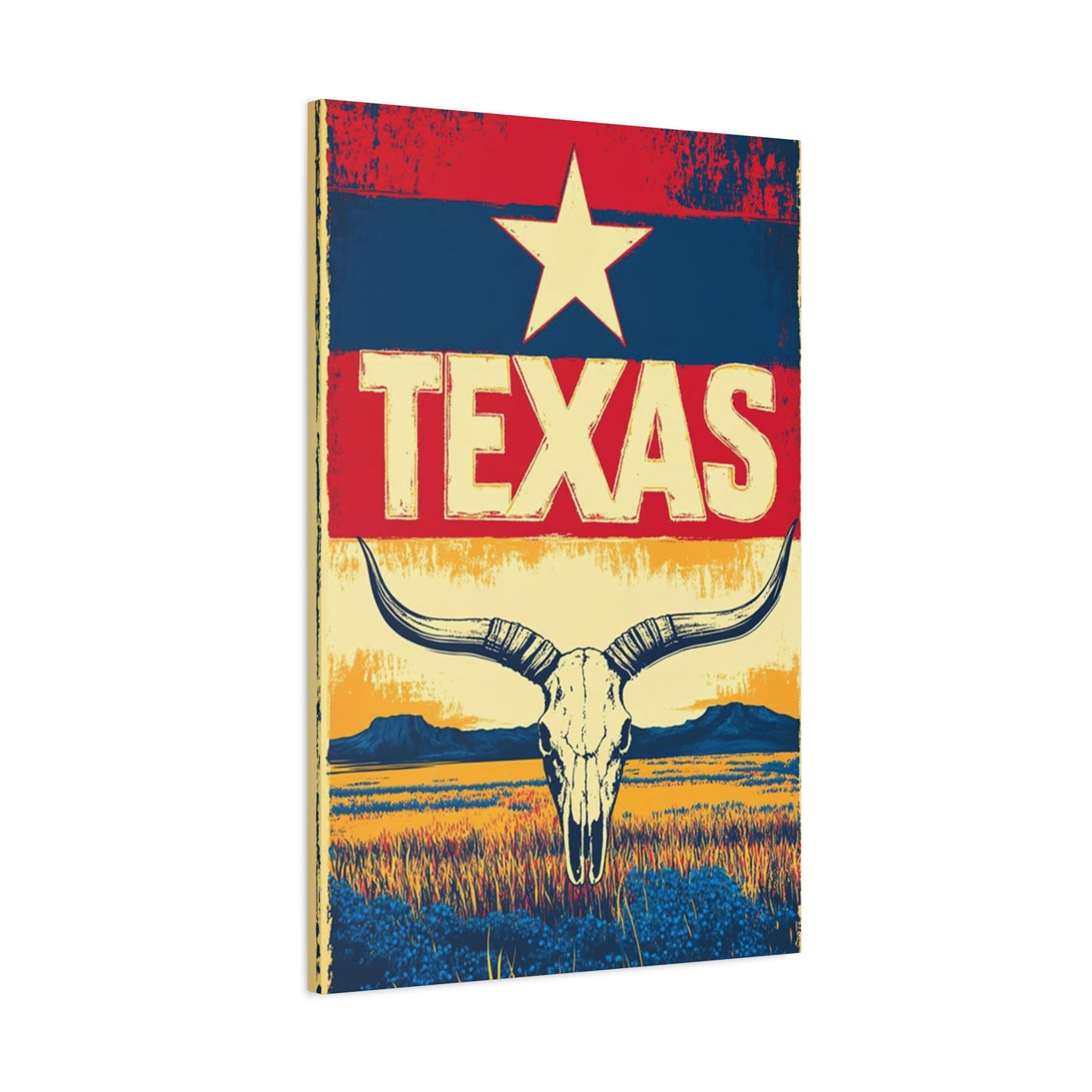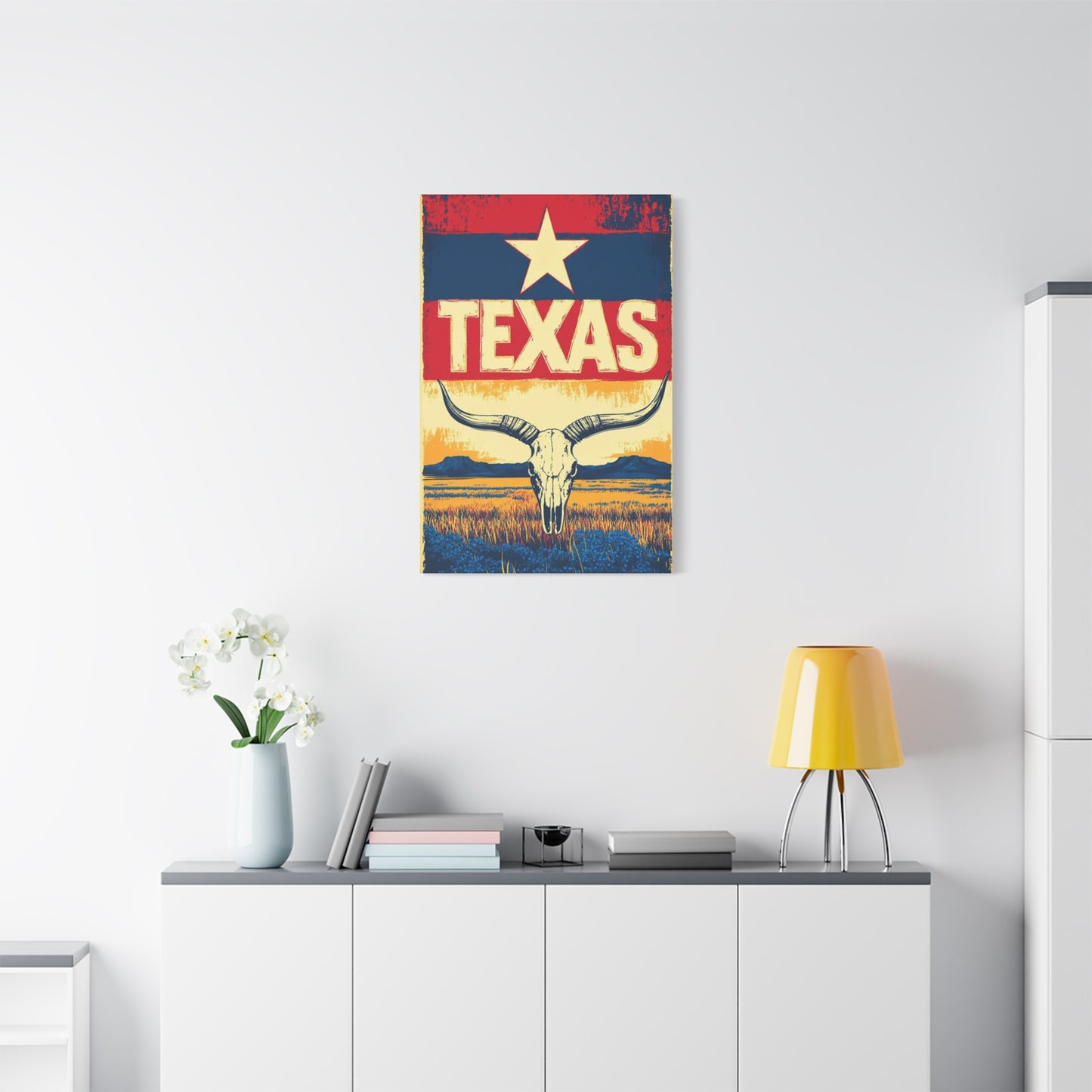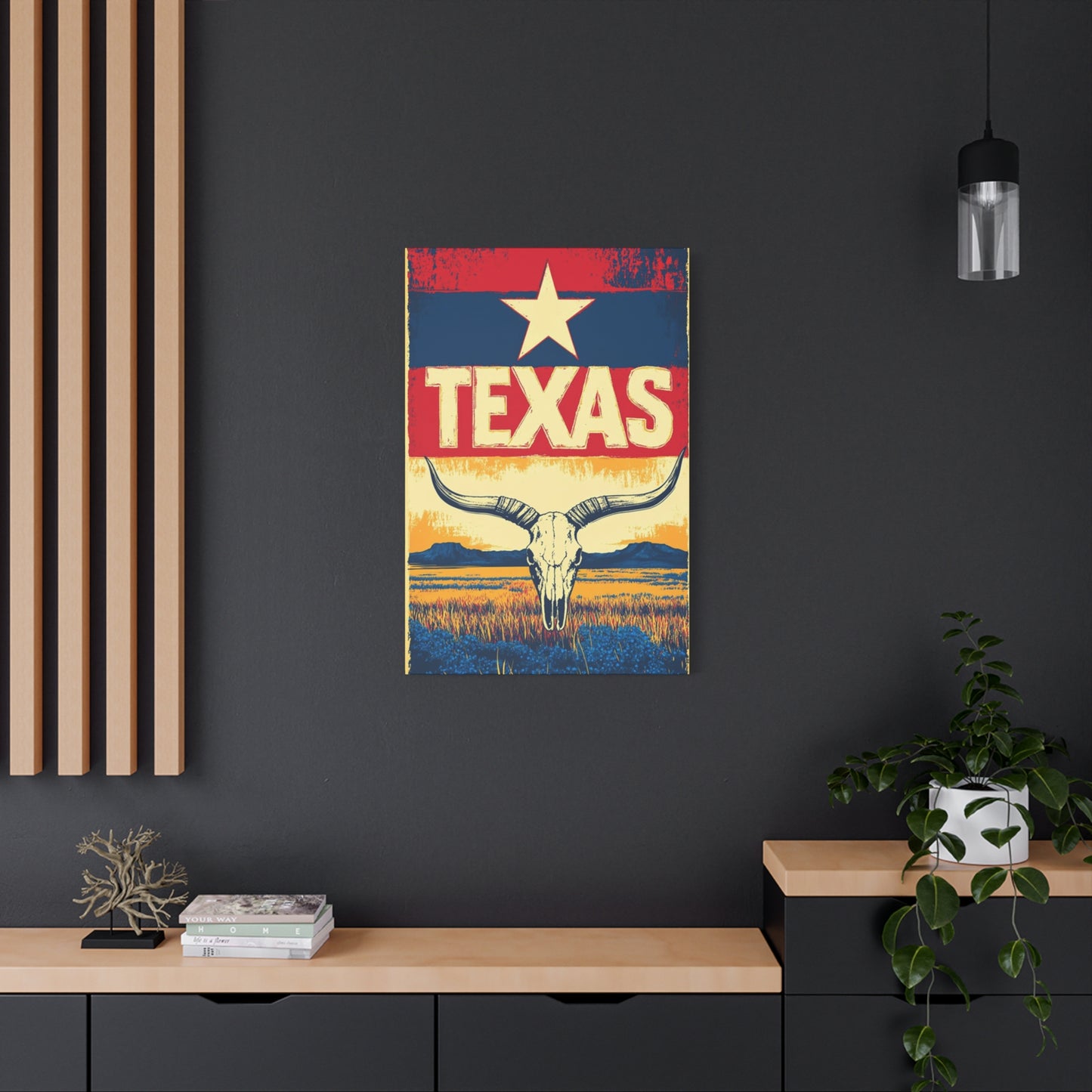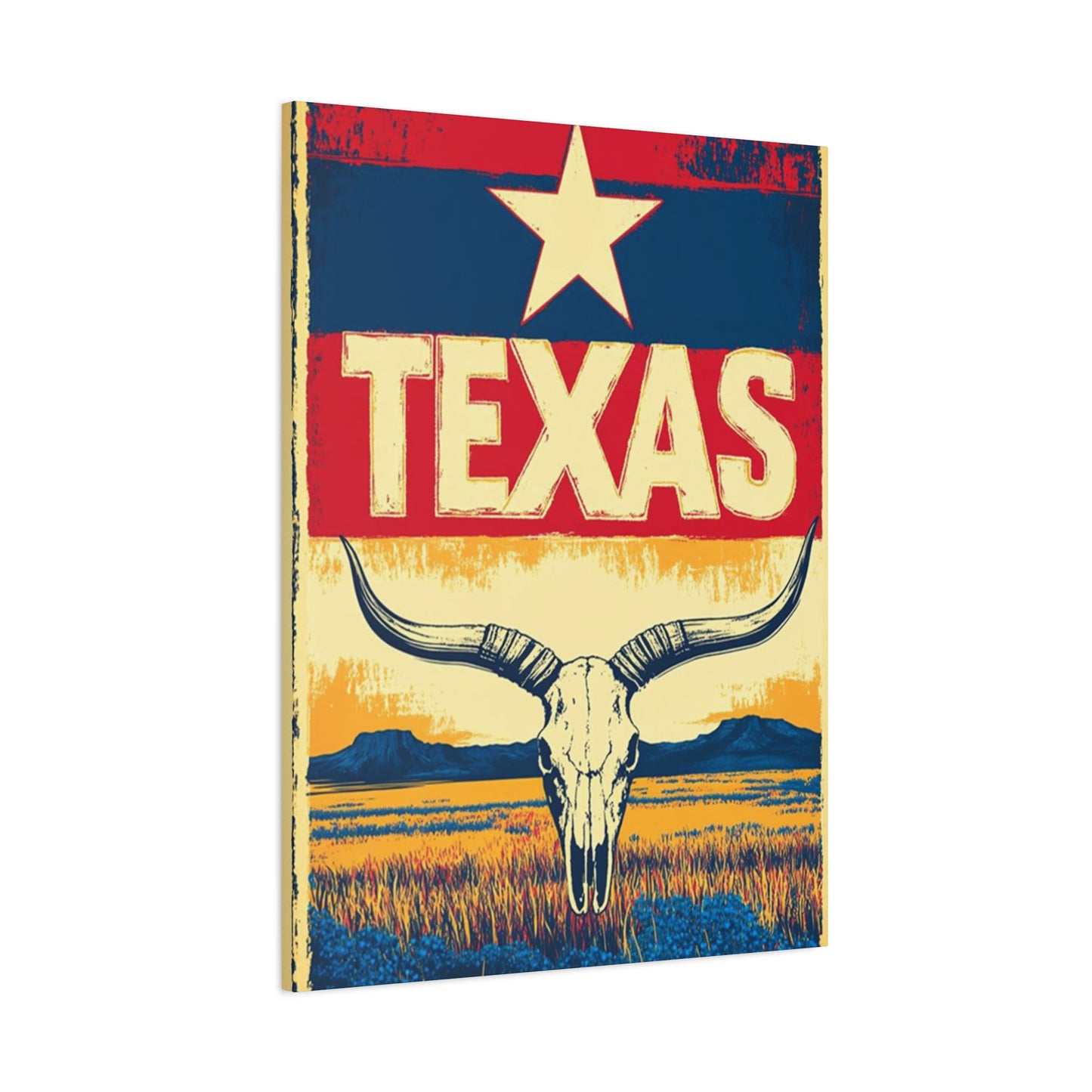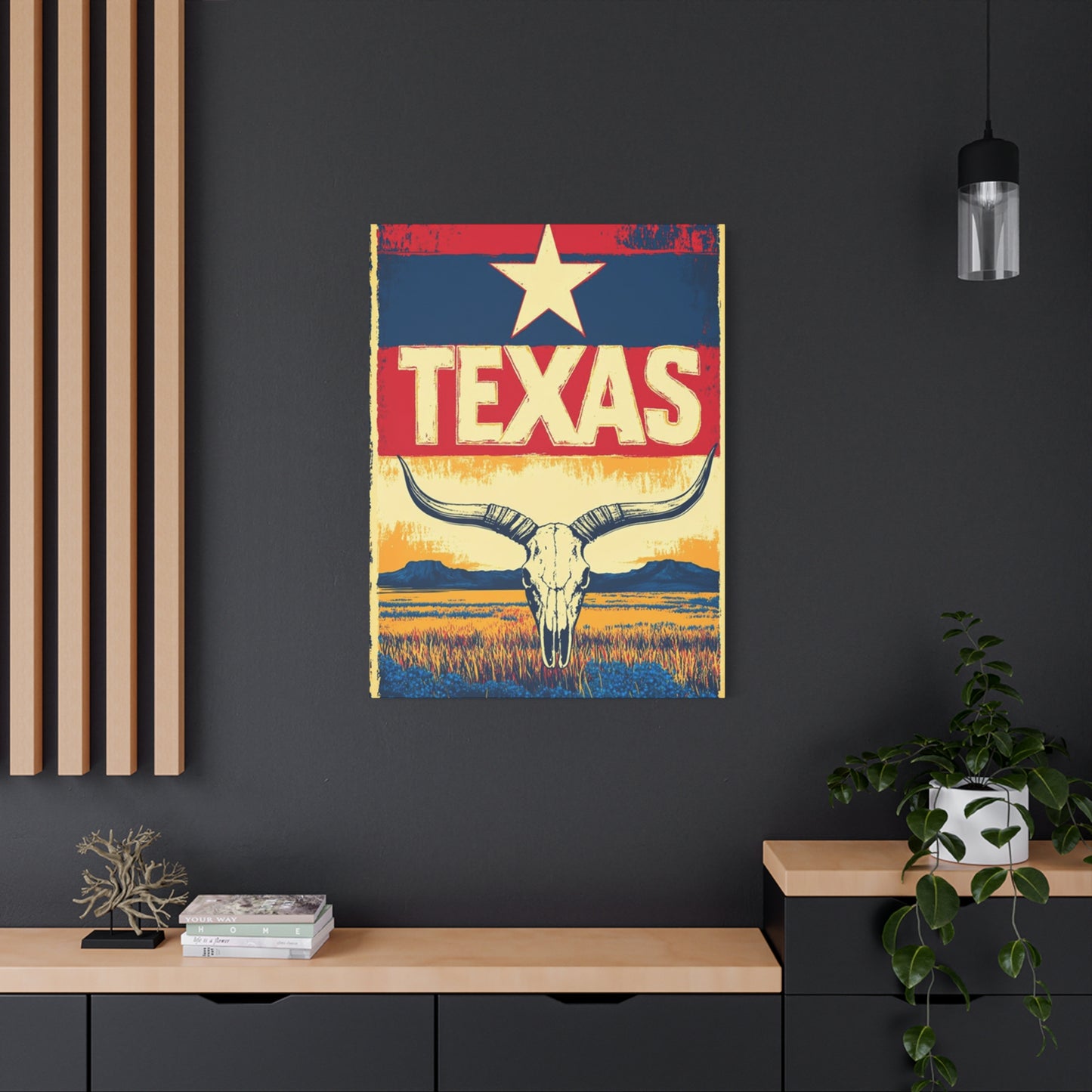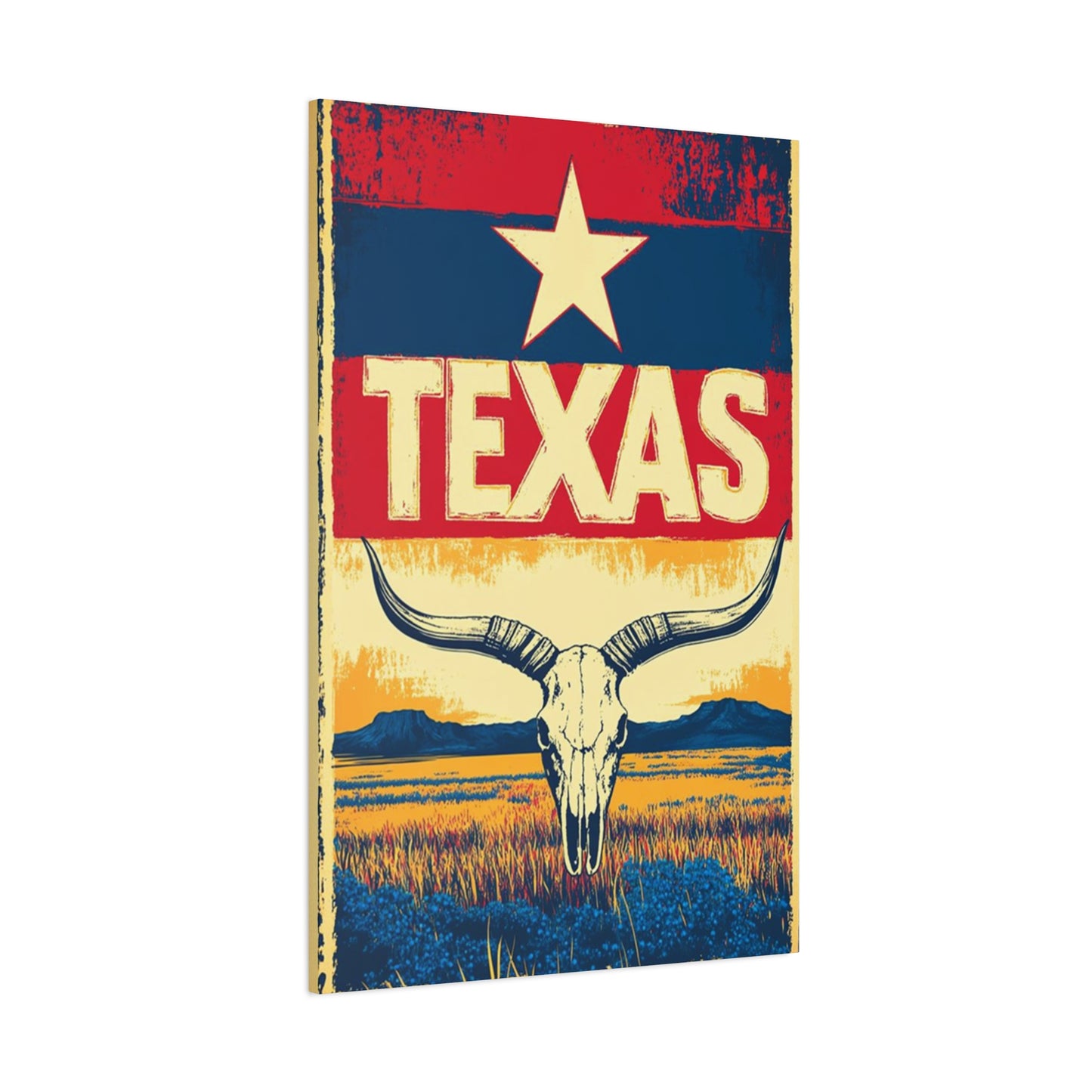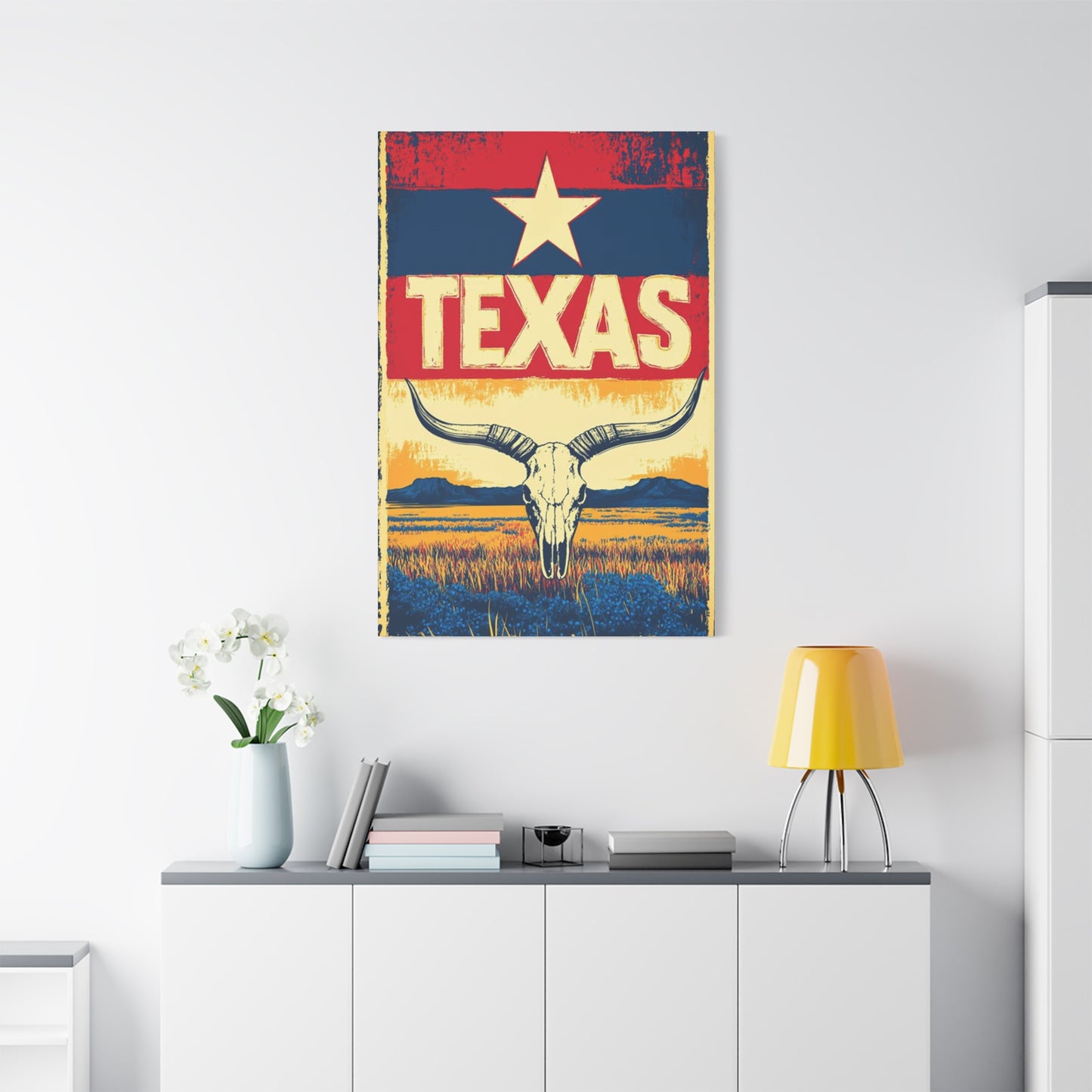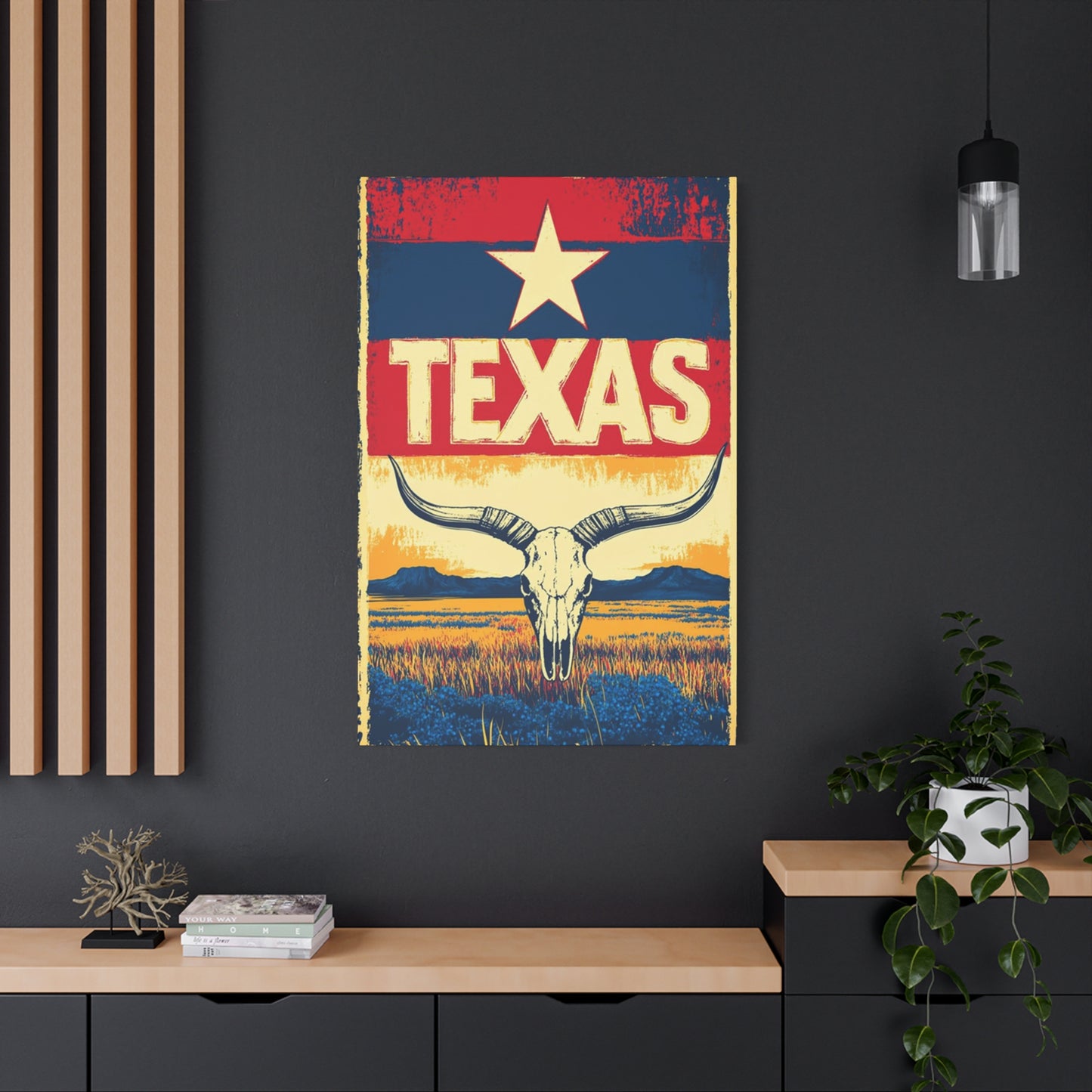Texas State Poster Wall Art: A Journey Through Landscape Beauty and Design Excellence
The artistry of Texas landscape posters has evolved into a sophisticated form of interior decoration that captures the essence of the Lone Star State's diverse terrain and cultural heritage. These visual representations serve multiple purposes in modern homes and commercial spaces, offering both aesthetic appeal and a connection to one of America's most iconic regions. The world of Texas state poster wall art encompasses everything from vintage-inspired prints to contemporary minimalist designs, each piece telling a unique story about the land, its people, and the spirit that defines this remarkable state.
Evolution of Texas Landscape Artwork
The tradition of capturing Texas landscapes through artistic representation dates back to the early exploration and settlement periods when cartographers and artists documented the vast territories. Early depictions focused on geographical accuracy combined with romantic interpretations of the frontier wilderness. These historical works laid the foundation for what would eventually become a thriving market for decorative landscape art. Throughout the nineteenth century, as Texas transitioned from republic to statehood, artists began creating more refined representations that celebrated the state's unique topography, from the rolling hills of the Hill Country to the dramatic canyons of West Texas.
The development of poster art as a commercial medium in the late 1800s and early 1900s brought new opportunities for landscape representation. Travel posters promoting tourism to various Texas regions became popular, featuring bold colors and simplified compositions that captured the imagination of potential visitors. These vintage promotional materials have since become highly collectible and serve as inspiration for contemporary designers creating Texas-themed wall art. The golden age of poster design in the mid-twentieth century saw artists experimenting with various styles, including Art Deco, Modernism, and Abstract Expressionism, all while maintaining recognizable Texas imagery.
Contemporary Texas landscape poster art builds upon this rich historical foundation while incorporating modern design sensibilities and production techniques. Digital illustration tools have expanded creative possibilities, allowing artists to create highly detailed works or stripped-down minimalist compositions with equal facility. The current marketplace offers an unprecedented variety of styles, sizes, and price points, making Texas landscape art accessible to diverse audiences. Collectors and casual buyers alike can find pieces that resonate with their personal aesthetic preferences while celebrating their connection to Texas geography and culture.
Understanding the Diverse Texas Terrain Through Poster Art
Texas encompasses an extraordinary range of landscapes across its vast territory, providing endless inspiration for poster artists. The state's geographical diversity includes coastal plains along the Gulf of Mexico, dense pine forests in East Texas, arid desert regions in the west, rolling prairies in the central areas, and dramatic mountain ranges in the far western reaches. Each of these distinct ecological zones possesses unique visual characteristics that artists interpret and celebrate through their work. Understanding these diverse terrains helps viewers appreciate the artistic choices made in representing Texas landscapes through poster art.
The Gulf Coast region presents opportunities for artwork featuring sandy beaches, barrier islands, coastal wetlands, and the interplay between land and sea. Artists capturing this area often emphasize the horizontal expanses of beach and water, the delicate colors of sunrise and sunset over the Gulf, and the distinctive vegetation adapted to coastal conditions. These compositions frequently incorporate elements like dunes, seagrass, pelicans, and the occasional offshore oil platform that speaks to the region's economic importance. The coastal landscape offers a softer, more fluid aesthetic compared to other Texas regions, with curved lines and gentle color transitions dominating the visual composition.
Central Texas, particularly the Hill Country, provides dramatically different subject matter with its limestone hills, clear spring-fed rivers, and distinctive vegetation including juniper and oak trees. This region's poster art often features the undulating topography that gives the area its name, with compositions emphasizing the layered hills receding into the distance. Artists frequently incorporate iconic elements like the Guadalupe River, Enchanted Rock, or fields of bluebonnets that bloom spectacularly each spring. The Hill Country aesthetic tends toward earthy tones punctuated by the vibrant blues and greens of water features and seasonal wildflowers, creating artwork that feels simultaneously rugged and inviting.
Design Styles in Texas Landscape Poster Art
The aesthetic approaches applied to Texas landscape poster art vary tremendously, reflecting both historical design movements and contemporary trends. Vintage-inspired designs remain perennially popular, drawing upon the visual language of mid-century travel posters with their simplified forms, limited color palettes, and bold typography. These pieces often feature stylized representations of Texas landmarks or landscapes, rendered in flat colors with minimal gradation. The nostalgic appeal of vintage-style artwork connects viewers to an idealized past while maintaining relevance through contemporary production quality and materials. Many collectors appreciate how these pieces evoke the golden age of American road travel and tourism promotion.
Minimalist Texas landscape posters strip away detail to focus on essential forms and colors, creating sophisticated artwork that works particularly well in modern interiors. These designs might reduce a complex landscape to a few geometric shapes representing sky, land, and perhaps a single distinctive feature like a mesa or tree. Color palettes in minimalist work tend toward restraint, often featuring just two or three carefully chosen hues that capture the essence of a place without overwhelming the viewer. The negative space becomes as important as the depicted elements, creating breathing room that gives these designs their characteristic calm, uncluttered feeling. Minimalist approaches prove especially effective for representing the vast open spaces that characterize much of Texas.
Photorealistic and detailed illustration styles appeal to viewers seeking artwork that captures landscapes with high fidelity. These posters might feature meticulously rendered scenes showing the texture of rock formations, the play of light through tree branches, or the subtle color variations in a sunset sky. Artists working in this style often spend considerable time observing and photographing their subjects before creating the final artwork. The resulting pieces offer viewers an opportunity to study and appreciate landscape details they might miss during casual observation. This approach works particularly well for showcasing specific, recognizable locations that viewers may have visited or aspire to explore.
Typography and Text Elements in Texas Poster Design
Many Texas landscape posters incorporate textual elements that identify locations, include inspirational quotes, or simply declare the state name as part of the overall design. The typography choices made by artists significantly impact the piece's overall aesthetic and effectiveness. Vintage-style posters often feature custom lettering reminiscent of hand-painted signs from the early to mid-twentieth century, with varied letter heights, decorative serifs, and individualistic character. These type treatments contribute to the nostalgic feel while also providing necessary information about the depicted location. The integration of text and image requires careful consideration to ensure that neither element overwhelms the other.
Minimalist landscape posters typically employ clean, modern typefaces when including text, often favoring sans-serif fonts that complement the simplified visual approach. The text might be positioned in negative space areas, maintaining the uncluttered feeling essential to minimalist design. Some artists choose to eliminate text entirely, allowing the landscape imagery to communicate without verbal assistance. When present, typography in minimalist work tends to be understated, serving its informational purpose without demanding attention or competing with the landscape elements. The restraint shown in type treatment mirrors the overall design philosophy of simplification and essential communication.
The placement of text within the composition requires thoughtful consideration of visual hierarchy and balance. Artists might position location names or other text at the bottom of the composition, creating a foundation for the landscape imagery above. Alternatively, text might be integrated into the sky area of a landscape scene, where it can be easily read without obscuring important foreground or midground elements. Some designs place text along the left or right edge, creating a vertical element that balances horizontal landscape features. The most successful typography integration feels intentional and harmonious rather than merely added as an afterthought to the visual composition.
Materials and Production Methods for Wall Art Posters
The physical production of Texas landscape posters involves numerous decisions about materials and methods that affect the final product's appearance, longevity, and price point. Traditional offset printing remains popular for producing large quantities of posters, offering excellent color reproduction and cost efficiency at scale. This printing method involves creating metal plates for each ink color and running paper through a series of rollers that apply the inks in precise registration. The quality of offset printing has improved dramatically over recent decades, with modern presses capable of producing remarkably detailed and color-accurate reproductions. Artists and publishers often choose offset printing when creating large edition runs or when cost considerations make it the most practical option.
Digital printing technologies have revolutionized poster production, enabling on-demand printing without the setup costs associated with offset methods. Giclée printing, which uses high-quality inkjet technology with archival pigment inks, produces gallery-quality prints with exceptional detail and color fidelity. This method works particularly well for artists producing smaller edition runs or offering customization options. The longevity of giclée prints rivals or exceeds traditional methods when proper archival inks and papers are used. Digital printing also allows for easy testing and adjustment of colors before committing to large production runs, giving artists greater control over the final product appearance.
The paper selection significantly impacts the final artwork's character and value. Heavyweight art papers with cotton content offer superior quality and archival properties compared to standard poster papers. These premium substrates provide excellent color saturation and a substantial feel that communicates quality to buyers. Textured papers can add tactile interest and may complement certain artistic styles, while smooth papers allow for maximum detail reproduction. Some artists offer their designs on multiple paper types, allowing buyers to choose based on personal preference and budget. The paper's acid-free and lignin-free properties ensure that the artwork will resist yellowing and degradation over time, maintaining its appearance for decades.
Framing and Display Considerations for Texas Landscape Posters
The presentation of Texas landscape posters significantly affects their visual impact and integration into interior spaces. Frame selection offers opportunities to enhance the artwork while protecting it from environmental damage. Traditional wooden frames with clean lines work well for most landscape styles, with the frame color and finish chosen to complement both the artwork and the surrounding decor. Light natural wood frames suit artwork with earthy, organic color palettes, while darker woods or black frames provide sophisticated contrast for pieces with lighter colors or significant white space. The frame's width should be proportionate to the poster size, with larger pieces typically requiring wider frames to provide visual weight and presence.
Metal frames offer sleek, modern alternatives to wood, working particularly well with minimalist or contemporary landscape designs. Aluminum frames in black, white, silver, or brass finishes provide clean lines and durability while remaining relatively lightweight even for large-format prints. The industrial character of metal framing complements urban interiors and modern design schemes. Some metal frames feature narrow profiles that minimize visual interference with the artwork itself, essentially disappearing from view and allowing the landscape image to take center stage. The longevity and low maintenance requirements of metal frames make them practical choices for high-traffic areas or spaces where frames might be occasionally bumped or moved.
Matting creates visual breathing room between the artwork and frame, adding a professional presentation quality while also serving protective functions. A mat board creates separation between the print and the glass, preventing the paper from touching the glazing where humidity could cause sticking or damage. The mat color selection influences how viewers perceive the artwork colors; neutral whites, creams, and grays work well for most pieces, while colored mats might be chosen to pick up specific hues from the artwork itself. Double matting with a slim inner mat in an accent color adds sophistication and visual depth to the presentation. The mat width should be sufficient to create clear separation while not overwhelming smaller prints with excessive border area.
Regional Focus Areas Within Texas Landscape Art
Big Bend National Park and the surrounding Chihuahuan Desert region provide some of the most dramatic landscape subjects available to Texas poster artists. The park's distinctive features including the Chisos Mountains, Santa Elena Canyon, and the Rio Grande corridor offer endless compositional possibilities. Artists capturing Big Bend often emphasize the stark beauty of desert landscapes, the dramatic geology exposed in canyon walls, and the remarkable color shifts visible during sunrise and sunset. The relative remoteness of this region adds to its mystique and appeal for artwork buyers seeking to connect with wild, untamed Texas landscapes. Poster art featuring Big Bend often employs bold color contrasts and dramatic lighting to convey the intensity of this remarkable environment.
The Texas Hill Country centered around cities like Austin, Fredericksburg, and San Antonio presents a completely different landscape character that artists interpret through various stylistic approaches. The rolling limestone hills covered with juniper and oak trees create pleasing compositions with natural rhythm and flow. Crystal-clear spring-fed rivers and creeks provide focal points and color contrast against the predominantly tan and green landscape. Artists frequently incorporate Hill Country wildflowers, particularly bluebonnets, into their compositions, creating artwork that celebrates the region's famous spring blooms. The Hill Country's accessibility and popularity as a tourist destination make artwork featuring this region consistently popular with buyers who have personal connections to the area through visits or residence.
The Gulf Coast region from South Padre Island through Galveston to the Louisiana border offers coastal landscape subjects distinct from the state's interior regions. Artists working with coastal themes might focus on pristine beach scenes, the interplay of marshes and waterways in coastal wetlands, or the industrial beauty of port facilities. The horizontal emphasis of coastal landscapes, with clear divisions between beach, water, and sky, lends itself to certain compositional approaches favoring horizontal formats and layered color bands. Coastal artwork often emphasizes the recreational aspects of beach culture alongside natural beauty, creating pieces that evoke vacation memories and relaxation. The lighter, airier color palettes typical of coastal work provide visual relief from the intensity of desert-themed pieces.
The Role of Wildlife in Texas Landscape Poster Art
While landscape features form the primary focus of Texas poster art, wildlife elements often appear as important secondary subjects that add life and interest to compositions. Longhorn cattle, perhaps the most iconic animal associated with Texas, frequently appear in landscape artwork either as central subjects or supplementary elements. These distinctive animals with their impressive horns immediately communicate Texas identity and connect to the state's ranching heritage. Artists might depict longhorns grazing in Hill Country pastures, standing dramatically against sunset skies, or portrayed in stylized, graphic forms that emphasize their characteristic silhouette. The inclusion of longhorns helps distinguish Texas landscape art from generic Western or Southwestern imagery.
Native bird species add movement and life to landscape compositions while maintaining focus on the broader environment. Roadrunners, the state bird of New Mexico but common throughout Texas, bring dynamic energy to desert landscape scenes. Great blue herons and other wading birds suit coastal and wetland compositions, their elegant forms creating vertical elements that contrast with horizontal landscape features. Turkey vultures soaring against big skies add to the sense of vast open spaces. Careful wildlife integration enhances rather than dominates landscape artwork, with animal elements sized and positioned to support rather than compete with the primary landscape subject. The wildlife choices artists make help specify particular regions and ecological zones within the diverse Texas landscape.
Desert wildlife including jackrabbits, coyotes, and various reptile species appear in West Texas and Big Bend themed artwork, adding authenticity and regional character. These animals adapted to harsh desert conditions symbolize resilience and survival in challenging environments. Artists might render wildlife with varying levels of detail, from nearly photorealistic to highly stylized silhouettes depending on the overall artistic approach. The scale of wildlife elements within the composition communicates relationships between animals and the vast landscapes they inhabit, often emphasizing the immensity of the environment by showing animals as small elements within expansive scenes.
Wildflowers and distinctive vegetation, while technically not wildlife, function similarly in landscape artwork by adding life, color, and regional specificity. Bluebonnets serve as immediately recognizable Texas symbols, their brilliant blue color creating stunning visual impact against green hillsides. Indian paintbrush with red-orange flowers provides complementary color contrast when combined with bluebonnets. Desert wildflowers including various cactus blooms add unexpected beauty to harsh landscapes. The seasonal nature of wildflowers allows artists to create variations on similar landscape scenes, showing the dramatic transformation that occurs during peak blooming periods. Wildflower-focused artwork maintains strong popularity due to the emotional connections many Texans feel toward these annual natural displays.
Vintage and Retro Aesthetic in Modern Texas Poster Art
The vintage poster aesthetic draws inspiration from travel posters created between the 1920s and 1960s, a period when poster art reached remarkable sophistication and commercial prominence. These historical works featured bold, simplified graphics, limited color palettes, and distinctive typography that modern artists emulate when creating retro-style Texas landscape posters. The vintage approach strips away extraneous detail, focusing on iconic landscape features rendered in flat colors with minimal gradation. This graphic simplification creates immediately readable imagery that works effectively at various scales from small prints to large outdoor advertisements. The nostalgic appeal connects viewers to a romanticized past while the clean, graphic quality remains aesthetically current.
Color choices in vintage-style Texas posters often reference the limited palettes imposed by early printing technologies, typically featuring four to eight distinct hues rather than continuous gradations. These restricted palettes force artists to make decisive choices about which colors best capture the essence of a landscape. The limitations paradoxically create visual strength, with each color carrying significant weight in the overall composition. Popular vintage color combinations include warm oranges and browns with cool blues, or various earth tones accented with a single bright color for impact. The slight color registration imperfections intentionally included in some modern vintage-style work add authenticity and hand-crafted character, even when the piece is created entirely through digital means.
Typography in retro Texas posters often features custom lettering styles reminiscent of hand-painted signs and early twentieth-century advertising. These letter forms might include decorative elements like drop shadows, outlines, or dimensional effects that were popular in the golden age of poster design. Font choices lean toward bold, geometric sans serifs or distinctive serif faces with strong personality rather than neutral, invisible typography. The integration of text and image in vintage-style work often shows careful attention to compositional balance, with lettering sized and positioned as a fundamental design element rather than merely informational addition. Some artists research historical Texas travel posters and tourism materials to ensure their typography choices feel authentic to specific eras.
The vintage aesthetic proves particularly effective for certain Texas subjects including state parks, famous highways like Route 66, historic towns, and classic tourist destinations. These subjects benefit from the nostalgic treatment that connects viewers to the history of Texas tourism and travel culture. National Park Service poster series from the 1930s and 1940s provide specific inspiration for contemporary artists creating vintage-style state park posters. The retro approach to depicting these enduring destinations creates a timeless quality that transcends temporary design trends. Collectors drawn to vintage aesthetics often seek to build comprehensive collections representing multiple Texas locations rendered in consistent style, creating unified gallery walls or displays that tell broader stories about the state's geography and tourism history.
Creating Seasonal Variations of Texas Landscapes
Spring in Texas brings dramatic visual transformations that artists capture through specific color palettes and compositional choices. The explosion of wildflowers, particularly bluebonnets and paintbrush, creates opportunities for artwork featuring brilliant color against green hillsides. Artists might focus on the contrast between vibrant flower fields and the more muted colors of surrounding landscape elements, using the flowers as focal points that draw the eye. The fresh greens of new growth and the crystal clarity of spring light contribute to the overall freshness of spring-themed artwork. These pieces tend toward optimistic, cheerful moods that reflect the season's renewal and beauty. Spring landscape posters maintain strong commercial appeal due to the season's popularity and the visual drama of wildflower displays.
Summer compositions emphasize heat, intensity, and the full development of vegetation and landscape features. The strong contrast between deep shadows and bright highlights under intense sunlight creates dramatic lighting conditions that artists can exploit for visual impact. Color palettes shift toward deeper, more saturated greens in areas with adequate moisture, while drought-stressed areas might feature golden or brown tones. The big skies of summer with dramatic cloud formations provide opportunities for interesting negative space and atmospheric effects. Summer sunset scenes showcase the spectacular colors visible in clear, dry air, with vivid oranges, pinks, and purples stretching across western horizons. The intensity of summer landscapes creates bold, confident artwork that commands attention.
Autumn in Texas brings more subtle changes than in regions with deciduous forests, but artists can still capture the season's distinctive character. The golden tones of cured grasses create warm fields that glow in the slanting autumn light. The occasional red or orange foliage from sumac, poison ivy, or non-native ornamental trees adds color accents. The shift toward cooler, clearer air creates crisp visibility and different light quality that affects the overall atmosphere of landscape scenes. Artists might emphasize the harvest season through agricultural elements like hay bales or the autumnal colors of turning vineyards in wine country regions. Fall landscapes tend toward warm, nostalgic palettes that evoke comfort and preparation for winter.
Winter Texas landscapes present interesting challenges and opportunities for artists seeking to capture the season's character in a state without dramatic snowfall in most regions. The dormant vegetation creates more muted color palettes dominated by browns, tans, and grays, with evergreen junipers providing color continuity. The bare branches of deciduous trees create interesting linear elements against sky or other backgrounds. The low angle of winter sunlight casts long shadows and creates warm light quality during the limited daylight hours. Artists might incorporate rare snow events, particularly in the Panhandle or West Texas mountains, to create dramatic seasonal contrast. Winter landscape artwork tends toward contemplative, quiet moods that reflect the season's introspective character. The muted palettes appeal to viewers seeking sophisticated, understated artwork.
The Influence of Light and Atmosphere in Landscape Artwork
Golden hour lighting, occurring shortly after sunrise and before sunset, provides spectacular conditions that landscape artists frequently capture in their work. The warm, directional light during these periods creates long shadows, rich colors, and dramatic three-dimensionality that enhances landscape features. Artists rendering golden hour scenes typically emphasize warm color temperatures, with oranges, reds, and yellows dominating the palette. The interplay of light and shadow becomes a primary compositional element, creating patterns and emphasizing texture in rock formations, vegetation, and terrain. The ephemeral quality of golden hour light adds emotional resonance to artwork, evoking feelings of peace, contemplation, and connection to natural rhythms.
Midday lighting presents different opportunities and challenges, with overhead sun creating minimal shadows and revealing colors in their most saturated, unmodified state. Artists working with midday lighting might emphasize the intensity of sunlight through high-contrast compositions or explore the vibrant colors of landscapes under neutral illumination. The harsh quality of midday light, while sometimes challenging to work with photographically, can be interpreted artistically to convey heat, intensity, and the uncompromising character of Texas summers. The strong light can bleach out colors in representations of particularly hot, dry conditions, creating pale, high-key compositions that communicate environmental extremes.
Atmospheric conditions including haze, clouds, storms, and clear air dramatically affect landscape appearance and the mood of artwork depicting various conditions. Morning mist softening distant landscape features creates opportunities for artwork exploring depth, mystery, and the gradual revelation of terrain. Storm clouds gathering over plains or mountains add drama and tension to compositions, with the contrast between dark clouds and illuminated foreground creating striking visual effects. The crystal clarity of air after rain or during cold fronts allows for artwork showing remarkable detail and depth, with distant features appearing sharp and clearly defined. Artists can manipulate atmospheric conditions to support particular emotional or aesthetic goals, using weather and air quality as compositional tools rather than merely recording what exists.
Seasonal light quality changes throughout the year, with the sun's position and atmospheric conditions creating distinctive characteristics in different seasons. The warm, golden quality of autumn light differs from the bright, clear light of spring or the intense, overhead light of summer. Artists attuned to these subtle differences can specify seasons through light quality alone, even without obvious seasonal markers like flowers or snow. The direction of light and length of shadows provide additional clues about time of year, with winter's low sun angle creating extended shadows compared to summer's abbreviated ones. Sophisticated landscape artwork incorporates these light quality considerations to create convincing seasonal portraits that resonate with viewers' lived experiences of Texas landscapes throughout the year.
Cultural and Historical Elements in Texas Landscape Art
The ranching heritage of Texas provides rich subject matter that artists incorporate into landscape posters either as primary focus or supporting elements. Windmills dotting the landscape serve as iconic symbols of rural Texas, their silhouettes immediately recognizable against sky backgrounds. These structures represent both the historical importance of water access in arid regions and the continuing significance of ranching to Texas identity and economy. Artists might render windmills in various styles from precise mechanical detail to simplified graphic representations, depending on the overall aesthetic approach. The vertical element of windmills provides compositional counterpoint to horizontal landscape expanses, creating visual interest and balanced compositions.
Historic buildings including old barns, homesteads, missions, and frontier structures add cultural context and human scale to landscape artwork. These architectural elements tell stories about settlement, adaptation to environment, and the passage of time. The weathered textures of aged wood and stone create visual interest and suggest history and endurance. Artists might feature these structures prominently as focal points or include them as smaller elements that add narrative to primarily landscape-focused compositions. The careful inclusion of architectural elements helps distinguish Texas landscape art from more generic Western or Southwestern imagery by referencing specific historical periods and settlement patterns unique to the state.
Native American and Spanish colonial history offers additional cultural layers that some artists incorporate into Texas landscape work. Petroglyphs, pictographs, and ancient dwelling sites in West Texas reference the deep human history of the region predating European settlement. Mission architecture along the San Antonio River and in other locations represents the Spanish colonial period's lasting influence on Texas culture and landscape. Artists addressing these historical dimensions create work that goes beyond pure landscape representation to explore the layered human experience of Texas places over centuries. The incorporation of cultural and historical elements adds depth and meaning to landscape artwork, transforming it from simple decoration to more meaningful commentary on place an
Commercial Applications of Texas Landscape Poster Art
Tourism and hospitality businesses utilize Texas landscape posters extensively to create ambiance and communicate regional identity. Hotels throughout the state decorate guest rooms and common areas with landscape artwork that helps visitors connect with the surrounding geography. These commercial installations often feature multiple coordinated pieces showing various aspects of regional landscapes, creating comprehensive visual experiences. Restaurants with Texas themes use landscape artwork to reinforce their brand identity and create environments that feel authentically connected to state culture. Gift shops at tourist destinations stock landscape posters featuring local scenes, allowing visitors to take home visual memories of their experiences. The commercial market for Texas landscape art remains robust due to continuing tourism and business demand for regionally appropriate decoration.
Real estate and property development companies employ Texas landscape artwork in model homes, sales offices, and marketing materials to help potential buyers envision lifestyle possibilities. Landscape posters showing nearby natural amenities like parks, lakes, or scenic areas communicate location value and quality of life factors. Developers of Hill Country properties might use artwork featuring rolling hills and spring-fed rivers to emphasize the natural beauty surrounding new developments. Urban projects might commission artwork showing city skylines against landscape backdrops, connecting new construction to its geographical setting. The strategic use of landscape artwork in real estate contexts helps create emotional connections between potential buyers and properties by emphasizing environmental and aesthetic qualities.
Geographic Accuracy Versus Artistic Interpretation
The balance between geographic accuracy and artistic interpretation represents a fundamental decision for landscape poster artists. Some creators prioritize faithful representation of specific locations, conducting extensive research and field observation to ensure accuracy. These artists might photograph or sketch locations extensively before creating finished artwork, measuring proportions and noting color relationships to achieve realistic representation. The resulting work satisfies viewers who know the depicted locations well and want artwork that captures places as they actually appear. Geographic accuracy proves particularly important when creating commemorative pieces for specific parks, landmarks, or protected areas where viewers have expectations about recognizable features.
Other artists embrace substantial interpretation and modification of landscapes to serve artistic vision and aesthetic goals. These creators might combine elements from multiple locations into composite scenes, alter proportions for compositional effect, or adjust colors to create particular moods unconnected to literal accuracy. The interpretive approach allows for greater creative freedom and can result in more visually striking artwork that prioritizes emotional impact over documentary faithfulness. Viewers who haven't visited depicted locations may not notice interpretive liberties, while those familiar with actual landscapes might appreciate the artistic transformation. The tension between accuracy and interpretation reflects broader debates within landscape art about the medium's purpose and obligations.
Generic Texas landscape representations avoid specific location identification, instead capturing characteristic features of broader regions or landscape types. An artist might create a Hill Country composition showing generic rolling hills, oak trees, and a stream without attempting to represent any particular actual location. This generic approach allows viewers to project their own experiences and memories onto the artwork, finding in it echoes of places personally meaningful to them. The absence of specific identifiers makes the artwork more universally applicable while maintaining clear Texas character through vegetation, geology, and atmospheric qualities. Generic landscapes often sell better than highly specific ones because they appeal to broader audiences not seeking to commemorate particular visits or locations.
The use of photographic reference material raises questions about the relationship between photography and artistic interpretation in landscape poster creation. Some artists work primarily from photographs, using them as foundation for traced or closely copied compositions. Others use photographs only as general reference while substantially recomposing and interpreting the subject. The reliance on photography versus working from memory, imagination, or plein air observation affects the final artwork's character. Photograph-based work tends toward greater accuracy and detail, while memory and imagination-based pieces often feel more interpretive and personal. Many contemporary artists combine approaches, using photographs for reference while exercising significant artistic license in translating three-dimensional landscapes to two-dimensional artwork.
Building Collections and Series of Texas Landscape Art
Many collectors approach Texas landscape poster acquisition as an ongoing project rather than single purchases, building collections that represent various regions, seasons, or styles. The series approach allows collectors to create comprehensive visual documentation of Texas geography while also achieving aesthetic cohesion through consistent style or format. An artist might offer a complete series showing all major state parks, various regions, seasonal variations, or different interpretations of significant landmarks. The collection mentality encourages repeated purchases as collectors work to complete sets or represent all personally significant locations. This approach benefits both artists who gain loyal repeat customers and collectors who enjoy the process of gradually building meaningful collections.
Gallery walls featuring multiple Texas landscape posters create impactful displays that tell broader stories than individual pieces alone. The arrangement of multiple works requires attention to visual rhythm, color relationships, and thematic connections. Some gallery walls emphasize symmetry and regular spacing, creating orderly, formal presentations, while others embrace asymmetry and varied spacing for more dynamic, organic arrangements. The frame consistency or intentional variation contributes to the overall effect, with matching frames creating unity and mixed frames adding visual interest. Gallery walls work particularly well in hallways, stairwells, and large wall expanses where single pieces might feel insufficient or lonely. The multiple-poster approach allows for greater flexibility in budget, as collectors can acquire and add pieces gradually over time.
Seasonal rotation of displayed artwork provides opportunities to refresh interior spaces throughout the year while keeping artwork investments in active use. Collectors might display spring wildflower pieces during blooming season, swap to summer scenes during hot months, transition to autumn compositions as weather cools, and finish with winter landscapes during cold months. This rotation keeps spaces feeling current and connected to the changing seasons while preventing the visual fatigue that can result from viewing the same artwork constantly. The seasonal approach requires adequate storage for pieces not currently displayed, but the investment in storage solutions pays dividends through extended artwork life and continued enjoyment of varied pieces. Digital collections and print-on-demand services now make seasonal rotation more affordable by eliminating the need to purchase and store physical pieces year-round.
Interior Design Integration of Texas Landscape Posters
The successful integration of Texas landscape posters into interior spaces requires attention to color relationships between artwork and surrounding decor elements. Designers and homeowners should consider wall colors, furniture upholstery, flooring, and other significant color masses when selecting landscape artwork. Complementary color schemes create vibrant contrast and energy, while analogous color schemes feel harmonious and restful. An orange-heavy sunset poster might complement a blue-gray wall beautifully through complementary contrast, while working less successfully against warm beige or brown walls where it might feel monotonous. The artwork can either blend subtly with existing color schemes or provide bold accent color that energizes otherwise neutral spaces. The size of the color impact relates directly to the artwork's physical scale, with larger pieces having more pronounced effects on room color perception.
Style coherence between artwork and interior design creates unified, thoughtful spaces rather than collections of random elements. Traditional interiors often call for realistic or classical landscape representations with ornate wooden frames, while modern spaces better suit minimalist or abstract interpretations with clean-lined frames or frameless presentations. Transitional spaces that blend traditional and contemporary elements can accommodate diverse artwork styles, allowing for more creative mixing and matching. The key lies in finding common threads like color, formality level, or subject matter that connect artwork to its surroundings even when styles vary. Some designers deliberately introduce stylistic contrast as a design strategy, but this approach requires careful execution to avoid visual chaos or confusion.
Lighting significantly affects how Texas landscape posters appear and how successfully they integrate into spaces. Natural light from windows changes in color temperature and intensity throughout the day, causing artwork colors to shift in appearance. Artificial lighting using LED, incandescent, or fluorescent sources each has different color characteristics affecting color perception. Picture lights mounted directly on frames or adjacent walls can highlight artwork while providing control over how pieces appear. Track lighting or recessed ceiling fixtures can illuminate artwork from above, though care must be taken to avoid glare on glazing surfaces. The direction, intensity, color temperature, and quality of light all influence whether artwork looks its best and achieves its intended impact within the space.
Spatial relationships between artwork and furniture, architectural features, and room proportions affect composition success. Artwork should relate logically to furniture groupings rather than floating randomly on walls with no connection to room arrangement. The standard practice of centering artwork at approximately eye level (58 to 62 inches from floor to center) provides comfortable viewing in most circumstances, though adjustments for furniture height or room purpose may be appropriate. Horizontal artwork often works best above horizontal furniture like sofas or console tables, while vertical pieces suit narrower wall spaces like areas between windows. The breathing room around artwork prevents crowding while allowing pieces to make their visual statements. Interior designers consider these spatial relationships carefully when selecting and placing Texas landscape posters to ensure optimal presentation and visual impact.
Digital Distribution and Print-on-Demand Revolution
The rise of digital distribution platforms has democratized access to Texas landscape artwork for both creators and consumers. Artists can upload designs to print-on-demand services that handle production, fulfillment, and customer service, allowing creators to focus on artistic work rather than business operations. These platforms typically use dropshipping models where products are manufactured only after orders are received, eliminating inventory risk and upfront production costs. The accessibility of these services has enabled countless artists to bring their Texas landscape visions to market without significant capital investment or business infrastructure. The lower barriers to entry have increased competition while also expanding the diversity of available artwork styles and subjects.
Print-on-demand technology capabilities have advanced dramatically, now enabling high-quality reproduction that rivals traditional methods in many applications. Modern digital printing equipment produces sharp detail, accurate color, and durable results on diverse substrates. The ability to print single copies economically makes customization and personalization feasible, with customers able to request specific sizes or even custom color variations. Variable data printing enables different text or personalization on each printed piece, opening possibilities for customized Texas landscape posters featuring buyers' names, dates, or personal messages. The quality improvements in print-on-demand have eliminated much of the stigma previously associated with on-demand production, making it a viable option for serious artists and designers.
Texas Landscape Photography Versus Illustrated Poster Art
The relationship between photography and illustrated Texas landscape posters raises interesting questions about artistic value, originality, and market positioning. Photography captures actual landscapes with optical accuracy, documenting real light conditions, weather, and landscape states at specific moments. The photographer's artistic contribution lies in choosing locations, timing, composition, technical settings, and post-processing manipulations. Illustrated artwork, whether created traditionally or digitally, involves complete construction of images by artists who make countless decisions about every visual element. The illustration process allows for idealization, combination of elements from various sources, and the expression of distinctive personal style unconnected to optical reality.
The market often perceives and values photographic and illustrated landscape artwork differently, with each medium claiming specific advantages. Photography enthusiasts appreciate the documentary authenticity and the connection to real places and moments. The technical excellence required for outstanding landscape photography commands respect, as does the commitment involved in traveling to locations and waiting for optimal conditions. Illustrated artwork appeals to buyers seeking distinctive artistic style, graphic boldness, or interpretive approaches unachievable through photography. The hand-crafted or artisanal quality of illustration connects to traditional fine art values that some buyers prize over photographic work. The market provides room for both mediums, with substantial audiences for each preferring one approach over the other for various reasons.
Hybrid approaches combining photographic elements with illustration techniques create interesting middle-ground artwork that borrows from both traditions. Digital artists might trace photographic references, using the photo for compositional structure while rendering the final image in distinctive illustration styles. Some creators photograph textures, skies, or specific elements that they then combine digitally with illustrated components to create composite images. The integration of photographic and illustrative approaches can yield artwork with photographic believability enhanced by illustration's stylistic possibilities. These hybrid methods raise questions about disclosure and authenticity, as viewers may not recognize the photographic foundations underlying apparently hand-illustrated artwork. Ethical creators clearly communicate their processes while protecting legitimate creative prerogatives regarding technical methods.
Customization and Personalization Trends in Landscape Poster Art
The growing consumer desire for personalized products extends to Texas landscape posters, with buyers increasingly seeking artwork customized to their specific preferences. Custom color palettes allow customers to request artwork in colors that coordinate with their particular interior design schemes. An artist might offer a favorite composition in multiple colorway options, or even create custom colors upon request for buyers willing to pay premium prices. The personalization of colors makes artwork feel specifically created for individual buyers rather than mass-produced for anonymous markets. Digital production workflows make color customization relatively simple compared to traditional methods, where changing colors would require significant additional effort and materials.
Textual personalization adds another dimension, with buyers requesting custom text including family names, meaningful dates, favorite quotes, or personalized messages. A Texas landscape poster commemorating a wedding might include the couple's names and wedding date subtly incorporated into the design. Anniversary gifts could feature the years of marriage alongside imagery from locations significant to the relationship. The addition of personal text transforms generic artwork into meaningful, individualized pieces with specific relevance to recipients. The challenge lies in integrating custom text gracefully so it enhances rather than detracts from the overall design. Artists offering text customization must develop flexible template systems that accommodate various name lengths and maintain design integrity across different text content.
Location customization enables buyers to request artwork showing specific places meaningful to them personally. While artists may offer standard compositions showing popular locations, custom commissions allow for artwork depicting the buyer's hometown, childhood landscape, wedding venue, or other personally significant places. The custom location approach commands higher prices due to the additional work involved in researching, photographing, and designing original compositions. Some artists specialize in custom location work, building businesses around creating personalized landscape artwork for individual clients rather than selling standardized designs to general markets. The one-of-a-kind nature of custom location pieces increases their value to buyers while also creating potential for ongoing relationships as clients commission additional works showing different meaningful locations.
Final Thoughts
Texas state poster wall art is a remarkable way to celebrate the vast and diverse beauty of the Lone Star State while adding a touch of design excellence to your living space. From the rolling hills of the Hill Country to the wide-open plains of West Texas, and the vibrant cityscapes of Austin and Dallas, Texas offers an impressive array of landscapes and cultural landmarks that inspire captivating artwork. These posters capture not just the physical beauty but also the spirit and pride that Texans hold dear.
One of the most compelling reasons to choose Texas state poster wall art is its ability to evoke a sense of place and identity. For residents and admirers alike, these posters serve as a visual reminder of Texas’s unique character—from its rugged natural beauty to its rich history and dynamic urban culture. Displaying a Texas-themed poster in your home or office connects you to that identity, sparking feelings of nostalgia, pride, or simply admiration for the state’s diverse offerings.
Texas posters are often crafted with a keen eye for design, blending artistic creativity with accurate representations of iconic locations. Whether featuring minimalist, vintage-inspired designs or bold, modern graphics, these posters strike a balance between aesthetic appeal and storytelling. The carefully chosen color palettes often reflect the natural tones of Texas—warm earth hues, vibrant sunsets, and rich greens of the pine forests—making them versatile decor pieces that complement a variety of interior styles.
Moreover, Texas state poster wall art serves as an educational and cultural touchstone. Many posters highlight lesser-known landmarks or historical sites, encouraging curiosity and exploration. They become conversation starters, inviting guests to learn more about Texas’s geography, history, and culture. This aspect transforms simple decoration into a meaningful experience, enriching your space beyond mere visual appeal.
In addition, the portability and affordability of poster art make it an accessible way to personalize your environment. Whether you’re decorating a dorm room, office, or living room, Texas posters offer an easy way to infuse your space with regional charm and a sense of belonging. They also make thoughtful gifts for friends and family who share a love for Texas or have fond memories of the state.
In conclusion, Texas state poster wall art perfectly combines landscape beauty with design excellence, creating pieces that resonate emotionally and visually. These artworks not only beautify your surroundings but also tell a story—one of a state known for its vast landscapes, vibrant culture, and deep-rooted pride. Bringing Texas into your home through poster art is more than decoration; it’s a celebration of everything that makes this state unique and beloved.

















